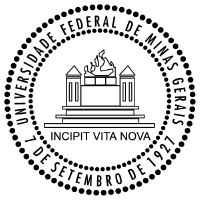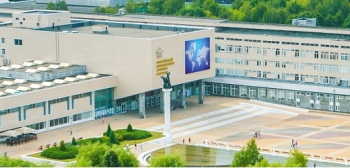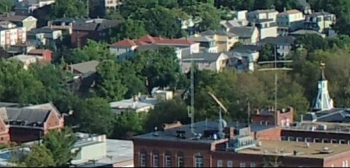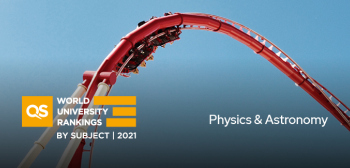米纳斯吉拉斯联邦大学
About
Read more
Read less
The origins in Brazil of the university go back as far as the 19th century, when it first appeared in the Republic as a continuation of a process that began during the Empire, with the opening of the first institutions of higher education. In Minas Gerais, the first institution of higher education, the School of Pharmacy in Ouro Preto, was founded in 1839. In 1875, the School of Mining was created and, in 1892, already under the Republican regime, the School of Law was established in the ancient capital of the state. In 1898, when the capital was moved to Belo Horizonte, the School of Law was moved as well. Then, in 1907, the Free School of Dentistry was created and, four years later, the Schools of Medicine and Engineering opened. In 1911, the School of Pharmacy was added to the Free School of Dentistry. A group of patriots, the "Inconfidentes," who rebelled against Portuguese domination, conceived of the idea of a university in the state of Minas Gerais, which was founded as the Universidade de Minas Gerais (UMG) in 1927. The state-subsidized private institution brought together the four institutions of higher learning that existed in Belo Horizonte. UMG remained within the state system until 1949, when it was federalized. In the 1940s, a large area in the Pampulha region became the site for the construction of University City. The first structures erected were the Institute of Mechanics (now the Vocational School) and the Main Building. The effective occupation of the campus by the university community started only in the 1960s, when the construction of the buildings that today house most of the academic units was started. The present name – Universidade Federal de Minas Gerais (UFMG) – was not adopted until 1965.When the university was federalized, the Schools of Architecture, Philosophy, and Economics had already been integrated into UFMG. Afterward, as part of its expansion and diversification, the university incorporated and created new units and schools: the Schools of Nursing (1950) and Veterinary Medicine (1961), the Minas Gerais Conservatory of Music (1962), and the Schools of Library (1962), Fine Arts (1963), and Physical Education (1969). In 1968, the organization of UFMG was reformed, which resulted in the division of the old School of Philosophy into various schools and institutes. Thus, the present School of Philosophy and Human Sciences, the Institutes of Biological Sciences and Exact Sciences, the Institute of Geo-Sciences, and the Schools of Letters and Education appeared. Today, firmly established as a model of excellence for the rest of the country, UFMG continues to expand. Agronomy (in Montes Claros), Drama, Control and Automation, Computational Mathematics, Audiology and Speech Pathology, and Nutrition have been added in the last five years, bringing the total of courses offered at the undergraduate level to 48. COURSES UFMG offers its courses in the following areas: Agriculture Biological Sciences Engineering Exact and Earth Sciences Human Sciences Health Sciences Applied and Social Sciences Linguistics, Letters, and Arts UNDERGRADUATE COURSES At present, UFMG offers 44 undergraduate...
About
The origins in Brazil of the university go back as far as the 19th century, when it first appeared in the Republic as a continuation of a process that began during the Empire, with the opening of the first institutions of higher education. In Minas Gerais, the first institution of higher education, the School of Pharmacy in Ouro Preto, was founded in 1839. In 1875, the School of Mining was created and, in 1892, already under the Republican regime, the School of Law was established in the ancient capital of the state. In 1898, when the capital was moved to Belo Horizonte, the School of Law was moved as well. Then, in 1907, the Free School of Dentistry was created and, four years later, the Schools of Medicine and Engineering opened. In 1911, the School of Pharmacy was added to the Free School of Dentistry. A group of patriots, the "Inconfidentes," who rebelled against Portuguese domination, conceived of the idea of a university in the state of Minas Gerais, which was founded as the Universidade de Minas Gerais (UMG) in 1927. The state-subsidized private institution brought together the four institutions of higher learning that existed in Belo Horizonte. UMG remained within the state system until 1949, when it was federalized. In the 1940s, a large area in the Pampulha region became the site for the construction of University City. The first structures erected were the Institute of Mechanics (now the Vocational School) and the Main Building. The effective occupation of the campus by the university community started only in the 1960s, when the construction of the buildings that today house most of the academic units was started. The present name – Universidade Federal de Minas Gerais (UFMG) – was not adopted until 1965.When the university was federalized, the Schools of Architecture, Philosophy, and Economics had already been integrated into UFMG. Afterward, as part of its expansion and diversification, the university incorporated and created new units and schools: the Schools of Nursing (1950) and Veterinary Medicine (1961), the Minas Gerais Conservatory of Music (1962), and the Schools of Library (1962), Fine Arts (1963), and Physical Education (1969). In 1968, the organization of UFMG was reformed, which resulted in the division of the old School of Philosophy into various schools and institutes. Thus, the present School of Philosophy and Human Sciences, the Institutes of Biological Sciences and Exact Sciences, the Institute of Geo-Sciences, and the Schools of Letters and Education appeared. Today, firmly established as a model of excellence for the rest of the country, UFMG continues to expand. Agronomy (in Montes Claros), Drama, Control and Automation, Computational Mathematics, Audiology and Speech Pathology, and Nutrition have been added in the last five years, bringing the total of courses offered at the undergraduate level to 48. COURSES UFMG offers its courses in the following areas: Agriculture Biological Sciences Engineering Exact and Earth Sciences Human Sciences Health Sciences Applied and Social Sciences Linguistics, Letters, and Arts UNDERGRADUATE COURSES At present, UFMG offers 44 undergraduate...
University highlights
- 2012#451- 500
- 2014#481-490
- 2015#451-460
- 2016#551-600
- 2017#551-600
- 2018#551-600
- 2019#601-650
- 2020#651-700
- 2021#651-700
- 2022#651-700
- 2023#701-750
- 2024#691-700
- 2025#671-680
- 2026#=595
QS Stars is a rating system that helps you select the right university based on your
interests. It provides a detailed look at an institution, identifying which universities rate highest in
the
specific topics that matter to you, like facilities, graduate employability, social responsibility,
inclusiveness, and more.
Campus locations
Pampulha,
Av. Antonio Carlos , Belo Horizonte , Minas Gerais , Brazil , 31270-901
Similar Universities
乔治华盛顿大学商学院
George Washington University, Washington D.C.
Foisie Business School
100 Institute Road, Worcester
哥本哈根商学院
Solbjerg Pl. 3, 2000 Frederiksberg, Frederiksberg
Test preparations
Universidade Federal de Minas Gerais
CN






















